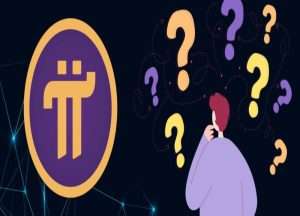Comparison of Stablecoins: USDT vs. USDC vs. UST
As crypto investors’ demand for digital dollars continues to grow, stablecoins are gaining market share across the crypto market. Read on to learn the similarities and differences between USDT, USDC, and UST in this stablecoin comparison guide.
What is Tether (USDT)?
Tether (USDT) is created by Tether Limited and is the world’s leading stablecoin by market capitalization. It is a digital currency that is pegged to the US dollar to keep its value stable.
USDT was designed to be pegged 1:1 to the US dollar. This means while the price of other cryptoassets fluctuates, USDT’s price usually stands around USD 1.
USDT operates on several blockchains, including Ethereum (ETH), Algorand (ALGO), EOS, Solana (SOL), Tron (TRX), and more. Tether can interface with these blockchains to allow for the issuance and redemption of USDT.
The leading stablecoin is backed by cash reserves, unsecured short-term debts, and other dollar-denominated fixed income securities, according to an audit of Tether. It claims that as of 31 December 2021, Tether held USD 78.68bn in assets versus USD 78.54bn in liabilities of which USD 78.48bn relates to digital tokens issued.
While USDT is by far the largest and most liquid stablecoin in the market, it has faced controversies, especially in regard to transparency around its dollar reserves.
At the time of writing (noon UTC on Friday), USDT has a total market capitalization of over USD 83.5bn.
What is USD Coin (USDC)?
USD Coin (USDC) is a stablecoin pegged to a ratio of 1:1 with the US dollar. USD Coin, commonly referred to as USDC, was launched in 2018 and is backed by the Centre Consortium (led by Coinbase and Circle). The consortium says its mission is to provide a stable digital currency and create an ecosystem where financial partners, wallets, exchanges, and crypto companies can interact within existing global financial regulations.
USDC is implemented across several networks, including Ethereum, Avalanche (AVAX), Algorand, Solana, Hedera Hashgraph (HBAR), Tron, Stellar (XLM), and more. According to the consortium, each USDC is backed by USD 1 or an asset with equivalent value kept in accounts in regulated US financial institutions.
Users who onramp through a USDC issuer can transfer fiat currency to receive USDC. The issuer will execute a series of instructions with the Centre to verify, validate and mint USDC tokens. Thereafter, the user can transfer the tokens externally to other parties.
To redeem USDC, a user requests a redemption from an issuer. Once it has been successfully verified and validated, the relevant USDC tokens are ‘burned’, and funds from the underlying reserves are transferred to the user’s bank account.
At the time of writing, USDC has a total market capitalization of USD 48.7bn.
What is TerraUSD (UST)?
TerraUSD (UST) is a decentralized algorithmic stablecoin that underpins the Terra (LUNA) blockchain. TerraUSD was launched in 2020 and was designed to offer a stablecoin solution for decentralized finance (DeFi) to the masses.
UST is pegged to the US dollar in an attempt to maintain its value at USD 1. However, unlike centralized stablecoins, UST isn’t backed by dollar reserves in a bank account. Instead, to mint a UST token, users pay USD 1 worth of LUNA, which acts as TerraUSD’s reserve asset.
TerraUSD is the leading cross-chain protocol in the industry. This means that the leading blockchains support UST, and its dropship bridge protocol enables it to integrate into several DeFi and decentralized exchange (DEX) platforms.
Moreover, TerraUSD’s Anchor protocol offers up to 20% yields on UST deposits. This yield is in the form of staking rewards from major proof-of-stake (PoS) networks and interest paid from borrowers using the Anchor savings protocol.
At the time of writing, UST is the third-largest stablecoin and has a total market capitalization of almost USD 18.7bn.
Major Differences: USDT vs. USDC vs. UST
| USDT | USDC | UST | |
| Launch year | 2014 | 2018 | 2020 |
| Stablecoin issuer | Tether is the sole issuer of USDT. | USDC is issued by Circle but can also be issued and redeemed by other member institutions of the Centre Consortium. | UST operates on the Terra blockchain and Terra’s LUNA token is used as the reserve asset to maintain the stablecoin’s value. |
| Base fiat currency | Pegged to the US dollar in a 1:1 ratio | Pegged to the US dollar in a 1:1 ratio | UST relies on a swap function to maintain its peg by contracting the supply of UST when it is below the peg and expanding LUNA, and vice versa when it is above the peg. |
| Collateral type | 85% reserves in cash and cash equivalents, short-term deposits, and commercial notes. The remainder is in secured loans, corporate bonds, precious metals, and even, holding other digital tokens. | 100% reserves in cash and cash equivalents including USD deposits in banks and short-term highly liquid investments. | Utilizes several mechanisms to maintain its peg ranging from partial collateralization to programmatic contraction. |
| Blockchains supported | Ethereum, Algorand, EOS, Solana, Tron, and more. | Ethereum, Avalanche, Algorand, Solana, Hedera, Tron, Stellar, and more. | Terra, Ethereum |
Advantages And Disadvantages: USDT vs USDC vs. UST
| USDT | USDC | UST | |
| Price stability | Relatively stable in value pegged 1:1 to the dollar | Very stable in value pegged 1:1 to the dollar | Not very stable in value pegged 1:1 to the dollar |
| Ability to blacklist wallet addresses | Yes | Yes | No |
| Regulation | Somewhat regulated | Highly regulated | Unregulated |
| Adoption | Most accepted stablecoin in the market. | Second-largest stablecoin in the market. Popular in DeFi. | New stablecoin, but is already the third-largest. Mainly popular in DeFi on Terra blockchain. |
| Decentralization | Centralized | Centralized | UST allows a limited number of nodes that keep the network stable, which makes it less decentralized than other networks. However, it is more decentralized than USDT and USDC. |
So Which Is the Best?
When it comes to stablecoins, it’s hard to say definitively that one is better than another. It really depends on what you’re looking for.
If you want to trade a lot of digital assets and prefer to use a highly compliant stablecoin backed by a regulated company, then USDC may be the way forward. Conversely, if you prefer to trade a decentralized and USD-backed stablecoin, you would choose UST from the three stablecoins mentioned in this guide. If you need deep liquidity and broad market acceptance, USDT may be your stablecoin of choice.
As with many things in cryptocurrency, it’s up to you to do your own research and decide what works best for your crypto wallet.










